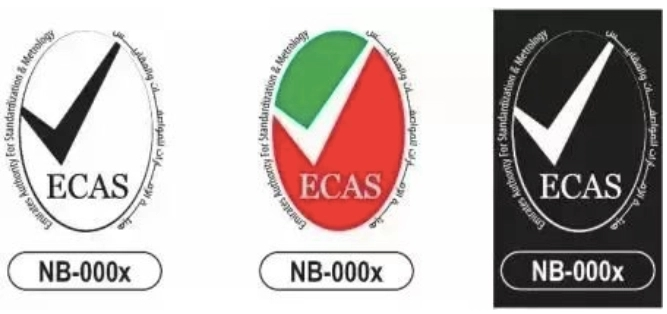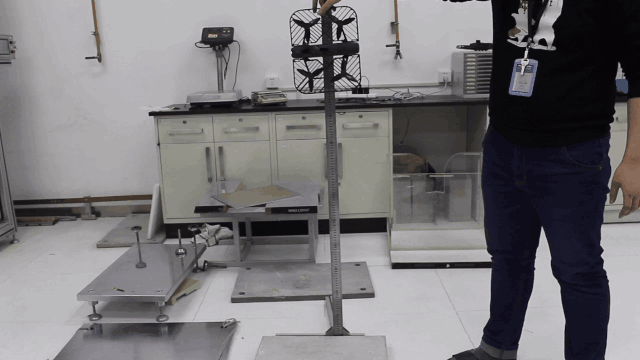The Middle East market refers to the region mainly in West Asia and spanning Europe, Asia and Africa, including Iran, Kuwait, Pakistan, Saudi Arabia, Egypt and other countries. The total population is 490 million. The average age of the population in the entire region is 25 years old. More than half of the people in the Middle East are young people, and these young people are the main consumer group of cross-border e-commerce, especially mobile e-commerce.
Due to heavy reliance on resource exports, countries in the Middle East generally have a weak industrial base, a single industrial structure, and increasing demand for consumer and industrial products. In recent years, trade between China and the Middle East has been close.

What are the main certifications in the Middle East?
Saber certification is a new online application system launched by SASO. Saber is actually a network tool used for product registration, issuance and obtaining compliance COC certificates. The so-called Saber is an online network system tool launched by the Saudi Bureau of Standards. It is a complete paperless office system for product registration, issuance and obtaining compliance clearance SC certificates (Shipment Certificate). The SABER conformity certification program is a comprehensive system that sets regulations, technical requirements and control measures. Its goal is to ensure the insurance of local products and imported products.
The SABER certificate is divided into two certificates, one is the PC certificate, which is the product certificate (Certificate Of Conformity For Regulated Products), and the other is the SC, which is the shipment certificate (Shipment Conformity certificate for imported products).
The PC certificate is a product registration certificate that requires a product test report (some product manufacturers also need factory inspections) before they can be registered in the SABER system. The certificate is valid for one year.
What are the categories of Saudi Saber certification regulations?
Category 1: Supplier Conformity Declaration (non-regulated category, supplier compliance statement)
Category 2: COC Certificate OR QM Certificate (General control, COC certificate or QM certificate)
Category 3: IECEE Certificate (products controlled by IECEE standards and need to apply for IECEE)
Category 4: GCTS Certificate (products subject to GCC regulations and need to apply for GCC certification)
Category 5: QM Certificate (products subject to GCC regulations and need to apply for QM)

2. GCC certification of the seven Gulf countries, GMARK certification
GCC certification, also known as GMARK certification, is a certification system used in member states of the Gulf Cooperation Council (GCC). The GCC is a political and economic cooperation organization composed of six Gulf countries: Saudi Arabia, the United Arab Emirates, Kuwait, Qatar, Bahrain and Oman. GCC certification aims to ensure that products sold on the markets of these countries comply with consistent technical standards and regulations to promote international trade and improve product quality.
GMark certification certificate refers to the official certification obtained by products certified by GCC. This certificate indicates that the product has passed a series of tests and audits and complies with the technical standards and regulations established by GCC member states. GMark certification is usually one of the necessary documents for importing products to GCC countries to ensure that the products are sold and used legally.
Which products must be GCC certified?
The technical regulations for low-voltage electrical equipment and supplies cover electrical equipment products with AC voltage between 50-1000V and DC voltage between 75-1500V. All products need to be affixed with the GC mark before they can be circulated among the member states of the Gulf Standardization Organization (GSO); products with the GC mark indicate that the product has complied with the GCC technical regulations.
Among them, 14 specific product categories are included in the scope of GCC compulsory certification (controlled products), and must obtain a GCC certification certificate issued by a designated certification agency.

ECAS refers to the Emirates Conformity Assessment System, which is a product certification program authorized by the UAE Federal Law No. 28 of 2001. The plan is implemented by the Ministry of Industry and Advance Technology, MoIAT (formerly Emirates Authority for Standardization & Metrology, ESMA) of the United Arab Emirates. All products within the scope of ECAS registration and certification should be marked with the ECAS logo and the Notified Body NB number after obtaining certification. They must apply for and obtain a Certificate of Conformity (CoC) before they can enter the UAE market.
Products imported into the UAE must obtain ECAS certification before they can be sold locally. ECAS is the abbreviation of Emirates Conformity Assessment System, which is implemented and issued by the ESMA UAE Standards Bureau.

4. Iran COC certification, Iran COI certification
Iran's certified export COI (certificate of inspection), which means compliance inspection in Chinese, is a related inspection required by Iran's mandatory import legal inspection. When the exported products are within the scope of the COI (certificate of inspection) list, the importer must conduct customs clearance according to the Iranian national standard ISIRI and issue a certificate. To obtain certification for export to Iran, relevant certification needs to be carried out through an authorized third-party agency. Most industrial products, equipment and machinery imported into Iran are subject to mandatory certification procedures established by ISIRI (Iranian Standards Industrial Research Institute). Iran's import regulations are complex and require a large amount of documentation. For details, please refer to the Iran Compulsory Certification Product List to understand the products that must undergo the ISIRI "Conformity Verification" procedure.
5. Israel SII certification
SII is the abbreviation of the Israeli Standards Institute. Although SII is a non-governmental organization, it is directly managed by the Israeli government and is responsible for standardization, product testing and product certification in Israel.
SII is a compulsory certification standard in Israel. For products that want to enter Israel, Israel uses customs inspection and inspection control methods to ensure that the products meet relevant quality requirements. Usually the inspection time is longer, but if it is imported If the merchant has obtained the SII certificate before shipment, the customs inspection process will be greatly reduced. The Israeli Customs will only verify the consistency of the goods and the certificate, without the need for random inspections.
According to the "Standardization Law", Israel divides products into 4 levels based on the degree of harm they may cause to public health and safety, and implements different management:
Class I are products that pose the highest risk to public health and safety:
Such as household appliances, children's toys, pressure vessels, portable bubble fire extinguishers, etc.
Class II is a product with a moderate degree of potential hazard to public health and safety:
Including sunglasses, balls for various purposes, installation pipes, carpets, bottles, building materials and more.
Class III are products that pose a low risk to public health and safety:
Including ceramic tiles, ceramic sanitary ware, etc.
Category IV is products for industrial use only and not directly for consumers:
Such as industrial electronic products, etc.
6. Kuwait COC certification, Iraq COC certification
For each batch of goods exported to Kuwait, a COC (Certificate of Conformity) customs clearance permission document must be submitted. The COC certificate is a document proving that the product complies with the technical specifications and safety standards of the importing country. It is also one of the necessary licensing documents for customs clearance in the importing country. If the products in the control catalog are large in quantity and shipped frequently, it is recommended to apply for a COC certificate in advance. This avoids delays and inconvenience caused by lack of COC certificate before shipment of goods.
In the process of applying for a COC certificate, a technical inspection report of the product is required. This report must be issued by a recognized inspection agency or certification body and proves that the product complies with the technical specifications and safety standards of the importing country. The content of the inspection report should include the name, model, specifications, technical parameters, inspection methods, inspection results and other information of the product. At the same time, it is also necessary to provide relevant information such as product samples or photos for further inspection and review.

Low temperature inspection
According to the test method specified in GB/T 2423.1-2008, the drone was placed in the environmental test box at a temperature of (-25±2)°C and a test time of 16 hours. After the test is completed and restored under standard atmospheric conditions for 2 hours, the drone should be able to work normally.
Vibration test
According to the inspection method specified in GB/T2423.10-2008:
The drone is in non-working condition and unpackaged;
Frequency range: 10Hz ~ 150Hz;
Crossover frequency: 60Hz;
f<60Hz, constant amplitude 0.075mm;
f>60Hz, constant acceleration 9.8m/s2 (1g);
Single point of control;
The number of scan cycles per axis is l0.
The inspection must be carried out on the bottom of the drone and the inspection time is 15 minutes. After the inspection, the drone should have no obvious appearance damage and be able to operate normally.
Drop test
The drop test is a routine test that most products currently need to do. On the one hand, it is to check whether the packaging of the drone product can protect the product itself well to ensure transportation safety; on the other hand, it is actually the hardware of the aircraft. reliability.

pressure test
Under maximum usage intensity, the drone is subjected to stress tests such as distortion and load-bearing. After the test is completed, the drone needs to be able to continue to work normally.

life span test
Conduct life tests on the drone's gimbal, visual radar, power button, buttons, etc., and the test results must comply with product regulations.
Wear resistance test
Use RCA paper tape for abrasion resistance testing, and the test results should comply with the abrasion requirements marked on the product.

Other routine tests
Such as appearance, packaging inspection, complete assembly inspection, important components and internal inspection, labeling, marking, printing inspection, etc.

Post time: May-25-2024





